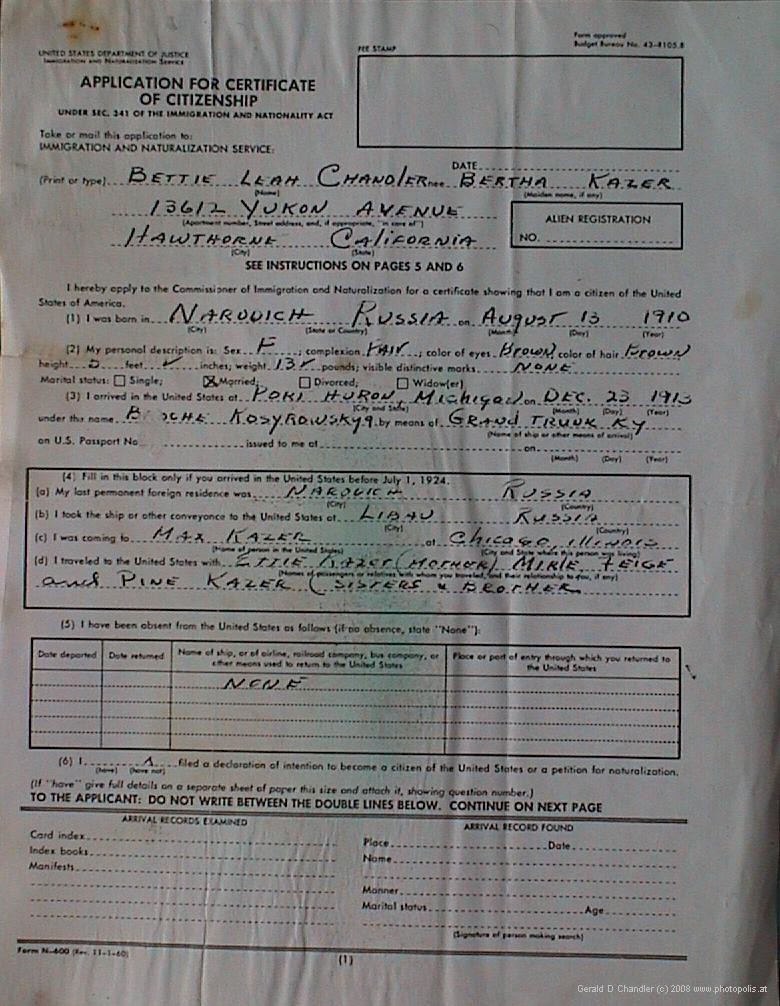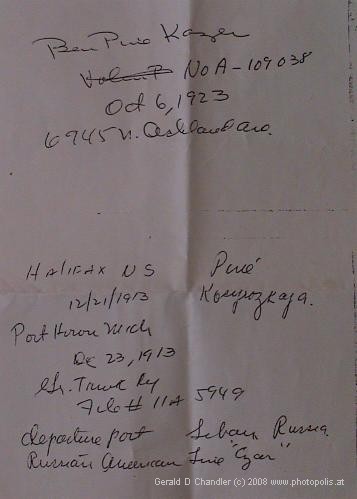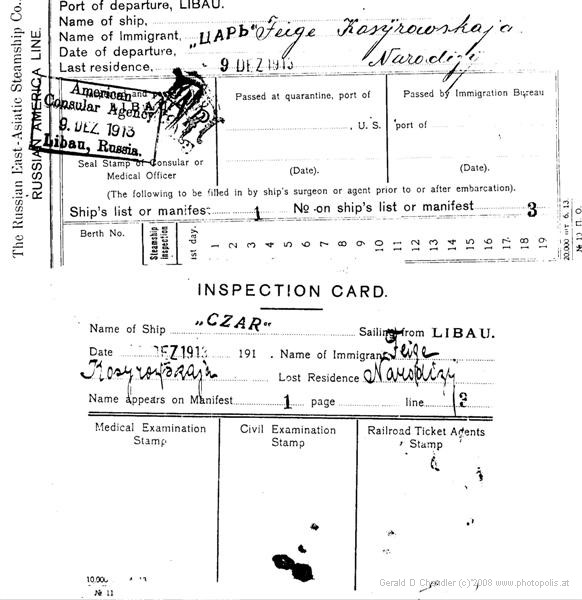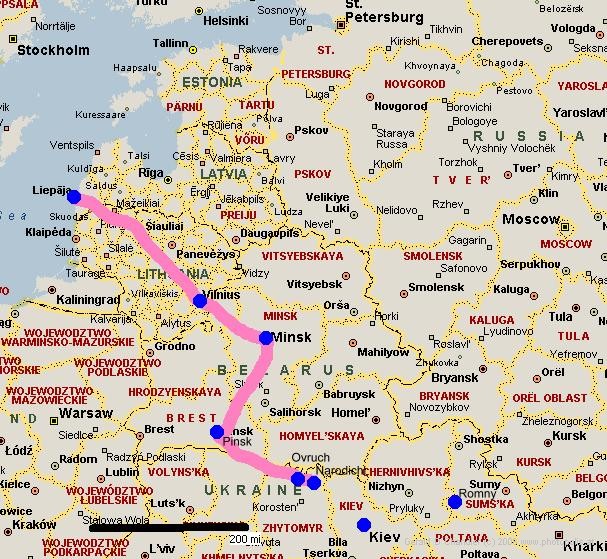Home |
Front Page |
Index |
Blog |
New |
Contact |
Site Map
Family Tree
Kazer Immigration Route
Kazer 1920 Census
Israel Komisars
Florida Kazers
Kiev Stotlands
New York City Stotlands
Zhytomyr Stotlands

|
In April I was in Houston and saw a photocopy of an interesting paper at Fred Grossberg's. He got it from Debbie Chandler. I took a photo of each side of the photocopy; my photos are shown here.
The paper is my mother's application for a certificate of US cititzenship. It is undated but from context must have been completed after 1958, the year of the death of her father, and before the death of her mother.
On the form there are many details about her and her family's arrival in
the USA that are new to me and maybe to you,
so I am displaying it here.
I assume
that all the information is correct as she seemed to fill it out herself.
She arrived in the USA as Broche Kosyrowskya. From this, apparently, the name Kazer was taken. You shouldn't believe that immigration officials made the change; it is clear from the context that the change took place after arrival.
She was, according to her, born on August 10, 1910. She always celebrated her birthday on March 16. Could she have changed it to appear a bit older? Perhaps when she was 20 and wanted to appear 21? Or earlier? We'll probably never know.

|
She travelled with her mother Ettie (née Stotland), sister Mirle (May), sister Feige (Frances), and brother Pine (Ben). The new names, in parentheses, are used by the family in the 1920 census. Significant by their absence, it makes it clear that her father and oldest brother, Morris, came earlier. Her youngest sister, Esther, was born after arrival and family reunion in the U.S..
They traveled from Libau, Russia via ship to Halifax, Nova Scotia, and then by the Grand Trunk Railway to Port Huron, Michigan. Libau, Russia is today known as Liepaja, Latvia. In a straight line it is 500 miles northwest of Narodichi. In 1913 the entire region through which they probably travelled was part of the Russian Empire.
Looking at the map, and knowing a bit where railroad lines are located, I would guess they travelled 15 miles by wagon from Narodichi to Ovruch and from there took the train to either Pinsk or Minsk (200 miles), both places where the Jewish communities were very large. In these places they may have had relatives or the chance to earn more money for the passage. From Minsk the natural route is via Vilnius (100 miles) and then on to Libau/Liepaja (another 200 miles). The entire trip could have been done in one hard day of travel or they could have broken it many times for many days.
Port Huron, Michigan is 60 miles north east of Detroit; it is located at the southern tip of Lake Huron across the Detroit River from Sarnia, Ontario, Canada. In 1913 the cost of living and travel by train through Canada were much lower than in the USA. That would explain the choice of travel through Canada by the Grand Trunk Railway.
This form doesn't mention the last part of the trip, to Chicago. In 1986 in a conversation with Frances Stotland she said that she remembered the train trip from Detroit to Chicago. She was 8 years old at the time.

|

|
The hand-written note at left is a picture of notes taken by Aunt Esther Kazer, widow of Pine (Ben Kazer), from Pine's embarcation card on the good ship "Czar" of the Russian American Line in December 1913. To the right of it is a photo of the actual embarcation card of Pine's elder sister Feige (Frances Kazer Stotland). When Aunt Esther gave me this information in March of 2003, it was the first time I had heard that the route the family took from Narodichi to the U.S. was known. Of course others of you out there did know. But I don't think anyone yet knows exactly when grandfather Max Kazer and his son Morris (Kazen) arrived or what route they took. If you do know, please let me know.
LIEPAJA: From Encyclopedia Britannica DVD 2002
German Libau, Russian Libava, city and port, Latvia, on the west (Baltic Sea) coast at the northern end of Lake Liepaja. First recorded in 1253, when it was a small Kurish settlement, Liepaja was the site of a fortress built by the Knights of the Teutonic Order in 1263. It was created a town in 1625, and in 1697-1703 a canal was cut to the sea and a port was built. In 1701, during the Great Northern War, Liepaja was captured by Charles XII of Sweden, but the end of the war saw the city in Polish possession. It was taken by Russia in the Third Partition of Poland, in 1795.

|
Liepaja's importance as a port, especially for grain export, was greatly stimulated in 1876 by the construction of the railway from Romny in the Ukraine. In 1893 a naval port was built, and its function as a naval base persisted through World Wars I and II, when the city suffered heavy damage, to the present. Modern Liepaja has important industries, producing steel, agricultural machinery, linoleum, sugar, canned fish, textiles, and footwear. It is a deep-sea fishing base and has several schools including a college of navigation and a branch of the Riga Polytechnic Institute. Pop. (1989 prelim.) 114,000.